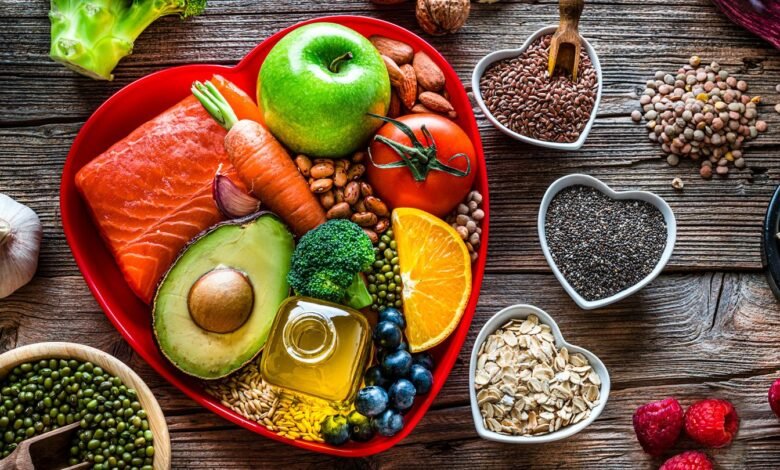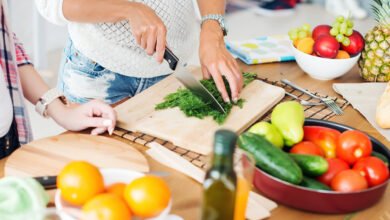How a Dietitian Balances Food and Health for Kwanzaa

How a Dietitian Balances Food and Health for Kwanzaa? the nation of the United States is home to a diverse range of cultural, religious, and seasonal traditions. One of them is Kwanzaa.
According to Britannica, it was developed in 1966 by Maulana Karenga, a professor of African studies at California State University, Long Beach. It is a secular festival that is celebrated every year from December 26 to January 1 and is regarded as a means for African American families to come together, feel empowered, and get back in touch with their roots. The term “Kwanzaa,” which refers to the start of the African harvest season, is derived from a Swahili expression that means “first fruits.” South Africa frequently celebrates the first fruits. Karamu, a communal feast, is the culmination of Kwanzaa.
Instead of taking the place of religious holidays, Kwanzaa was designed to be an alternative holiday celebration. Even though I was raised on Christmas and I still am, I also celebrate Kwanzaa with my family, friends, and occasionally even visitors who become like family by the end of the celebration.
Read More: Coronavirus Impact: Work From Home is Best during Covid-19
As someone with roots in the traditional South and Cajun region who is also of African American origin, I find that the cuisine served at these festivals is intricately linked to family, history, and identity. However, as a registered dietitian (RD), I am aware that more than two weeks of food-related festivities can be exhausting and may not leave me feeling at my best, so I make an effort to limit my portions to sampling or tasting sizes so I can still enjoy all the flavors I associate with this time without going overboard.
What Are Some Kwanzaa Traditions?

When I observe Kwanzaa, I usually begin the seven-day festival with a community event that introduces the holiday’s meaning and incorporates a number of its customary customs, including decorations, drumming, storytelling, and traditional dishes. It’s the ideal approach to embrace the communal spirit of Kwanzaa, which draws on African American tradition to inspire, unite, and remember.
To commemorate the seven days of Kwanzaa, participants utilize a candle holder known as a kinara. Three green candles signify the future, one black candle represents people of African origin, and the kinara contains three red candles to symbolize the battle. The dishes, the decor, the celebrants’ attire, and the space itself may all feature the Pan-African flag’s colors, which are also known as the colors for all Africans worldwide. In order to emphasize each of the Seven Principles of Kwanzaa, which are as follows, each candle is lit separately on each day, according to the National Museum of African American History and Culture:
- Umoja (unity) (unity)
- Kujichagulia (self-determination) (self-determination)
- Ujima (collective labor and responsibility) (collective work and responsibility)
- Ujamaa (cooperative economics) (cooperative economics)
- Nia (purpose) (purpose)
- Kuumba (creativity) (creativity)
- Imani (faith) (faith)
In addition to lighting the candle, one can engage in additional activities to give life and significance to the cultural legacy, such as singing, dancing, drumming, reciting poetry, and playing music.
What Is the Role of Food During Kwanzaa?

Food is integral to Kwanzaa since the celebration itself was inspired by the first fruits or harvest festivals in Africa, celebrations that occurred when people collectively harvested fruit and vegetable crops and gave thanks for their efforts and for one another. For me, this tradition lived on in my great-grandparents, who owned a farm where they raised and grew everything they consumed (a representation of Ojima, collective work, and responsibility).
Although many of the traditional foods of the harvest associated with Kwanzaa are served at our holiday celebrations, the Karamu feast is only held on the sixth night of Kwanzaa, which falls on December 31. One corn ear is placed on the table for each kid in the family, along with seasonal fruits, and participants drink from the unity cup (kizomba cha Umoja) to remember their ancestors.
There may be lots of portions of a one-pot stew like gumbo as the main course. Candied yams, buttermilk biscuits, spoonbread, plantains, rice or couscous, fritters, hoppin’ John (a rice dish), injera (an Ethiopian flatbread), manage or make (a West African peanut soup), and jollof rice is all examples of foods that contain starches. Given that Kwanzaa is fundamentally a celebration of community, communal meals are crucial.
Read More: How to Eat Dairy and Is It Healthy for You
We go all-out on flavor because the holiday only occurs once a year, utilizing bacon or its drippings, salt pork, buttermilk, and a lot of sugar. Bread-based sauces, a variety of sweet snacks, and punch or alcoholic beverages can be off-limits to those who avoid carbohydrates because the meal is often heavy and uses dairy products like milk, butter, or cheese for sides and desserts.
People can stay on track with their health goals by making healthier choices, such as seasoning greens with turkey necks or liquid smoke instead of bacon, swapping salt for herbs and spices, and adopting whole-grain alternatives. But in all honesty, on days like this, I allow myself to indulge in my favorite foods as long as I watch my portion sizes. I might cover half of my plate with nonstarchy vegetables, followed by one-fourth of carbs, and the final one-fourth of protein sources.
Having a meal together may nourish more than just our bodies; it can also nourish our minds and spirits. This is true both during Kwanzaa and the rest of the year. Storytelling over meals often looks back on the past and is tinted by a variety of experiences over the years, evoking a time when living conditions and food supplies were very different. The sharing of stories fosters ties between people of all ages, young and old. Recalling our origins helps us understand who we are and the responsibility we have to carry on our legacy (nia, purpose and kujichagulia, self-determination). Knowing what all of our ancestors went through to bring us to this point in time unites us and makes us feel proud (Umoja, unify).







